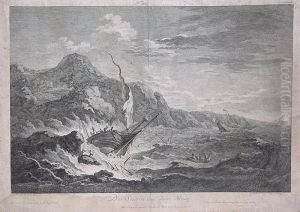Johann Balzer Paintings
Johann Balzer was a Bohemian engraver and etcher born on December 6, 1738, in Kuks, a small town in the Kingdom of Bohemia (now part of the Czech Republic). He is best known for his detailed and precise copper engravings, which often depicted landscapes, architectural views, and portraiture, and for his contributions to works illustrating the history and culture of Bohemia.
Balzer's early life is not well-documented, but it is known that he apprenticed as an engraver. He moved to Prague as a young man, where he further developed his craft and began to establish himself as a professional engraver. His meticulous work caught the attention of prominent figures and institutions, and he was commissioned to produce engravings for books and standalone prints.
During his career, Balzer collaborated with several notable artists and publishers. He provided plates for 'Bohemia Sancta', a historical work by the Bohemian historian Gelasius Dobner. This work aimed to document the lives of the saints and notable religious figures connected with Bohemia. In addition to his religious and historical engravings, Balzer also engraved portraits of notable individuals of his time.
Balzer’s technique was characterized by a high level of detail and precision, which allowed his works to serve not only as art but also as valuable records of historical and cultural significance. He was able to capture the intricate details of the subjects he engraved, from the texture of fabrics in portraits to the intricate lines of architectural drawings.
Despite the quality and significance of his work, there is not an abundance of personal information available about Balzer's life. His legacy, however, can be seen through his contributions to the cultural heritage of Bohemia and the art of engraving. He passed away on December 30, 1799, in Prague. Today, his engravings remain significant as historical documents and as examples of the engraver’s art during the 18th century.






